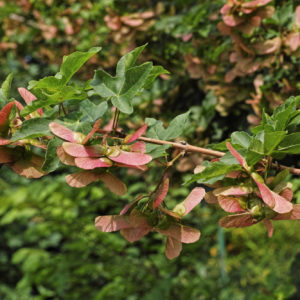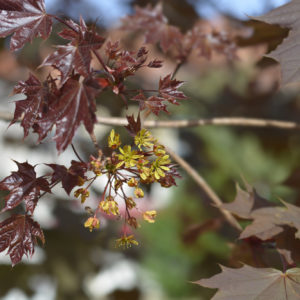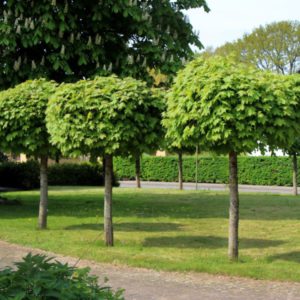Pinus nigra nigra
Price range: €350.00 through €600.00
Frequently Bought Together


Description
Quick Facts
- Common Name: Austrian Black Pine, Austrian Pine
- Botanical Name: Pinus nigra subsp. nigra
- Plant Type: Evergreen conifer tree
- Mature Height: 20-30m
- Mature Spread: 6-10m
- Flowering Period: May (cones develop)
- Flower Colour: Yellow male cones, green female cones
- Foliage: Dark green needles in pairs, dense and rigid
- Hardiness: RHS H7 (very hardy)
- Soil Requirements: Well-drained, tolerates poor soils and alkaline conditions
- Aspect: Full sun
- Maintenance: Low
Description
Discover the commanding presence of Pinus nigra subsp. nigra, the magnificent Austrian Black Pine that brings year-round structure, windbreak protection, and timeless evergreen beauty to Irish landscapes with its robust character and distinctive dark foliage. This outstanding conifer offers exceptional resilience and architectural presence—dense, dark green needles that create bold texture throughout the seasons, a naturally pyramidal form that develops into a broad, rounded crown with age, and remarkable tolerance of challenging conditions that make this ideal for exposed coastal sites, urban environments, and difficult soils.
Throughout the year, this impressive tree displays its characteristic dense bundles of dark green needles, each pair measuring 8-15cm in length, creating a rich, almost black-green appearance that gives this pine its common name. The rigid needles and sturdy branching structure provide substantial presence and create effective shelter from wind and salt spray. In spring, clusters of yellow male cones release pollen, whilst small green female cones develop into attractive brown cones that persist on the tree, adding textural interest. The deeply fissured dark grey-brown bark becomes increasingly dramatic with age, creating striking winter interest and adding to the tree’s rugged, timeless character.
Native to the mountains of central and southern Europe, this remarkable conifer has been widely planted across Ireland and beyond for its exceptional hardiness and adaptability. Thriving in Irish conditions, the Austrian Black Pine tolerates coastal exposure, salt spray, urban pollution, drought, and alkaline soils better than most conifers, making this an invaluable choice for challenging sites where other evergreens struggle. The robust nature and dense foliage make this excellent for windbreaks, screening, and shelter belts.
Create stunning compositions by planting as specimen trees in large gardens, estates, or parkland where their impressive stature can be fully appreciated. Magnificent in shelter belts and windbreaks for coastal properties, in groups for screening and privacy, or as bold focal points in contemporary landscapes. Works beautifully combined with other Mediterranean and drought-tolerant plants, or underplanted with heathers, lavenders, and ornamental grasses that thrive in similar lean, well-drained conditions.
Caragh Garden Notebook
Planting: Space trees 8-10m apart for groupings or windbreaks, or allow 10-12m for specimen planting. Plant container-grown specimens year-round, though autumn or early spring is ideal. Dig holes twice the width of the root ball but no deeper—pines prefer shallow planting. Do not incorporate organic matter as this species thrives in lean conditions. Plant at the same depth as the container, ensuring good contact between roots and soil. Stake for the first 2 years if exposed. Water thoroughly initially.
Soil Preparation: Thrives in well-drained soil with pH 6.0-8.5. Exceptionally tolerant of poor, stony, sandy, and alkaline soils. Prefers lean, free-draining conditions—avoid rich, moisture-retentive soils which can cause soft growth. One of the best conifers for chalky and limestone soils. Tolerates drought, coastal conditions, and salt spray. Avoid only waterlogged sites. No soil improvement necessary—this pine performs best in challenging conditions.
Container Growing: Not suitable for long-term container growing due to size and extensive root system. Young specimens can be grown temporarily as bonsai or in very large containers, but standard trees should be planted out within 2-3 years for best long-term health and to achieve full windbreak and screening potential.
Seasonal Care: Requires minimal maintenance—naturally maintains its form without pruning. Remove only dead or damaged branches as needed. Can be lightly shaped when young by pinching back new growth (candles) in spring by half to encourage denser growth, though this is optional. Apply no fertiliser—lean conditions produce the best, most resilient growth. Water only during establishment or prolonged drought in the first 2 years. Once established, extremely drought-tolerant and requires no supplementary watering.
Propagation: Propagate from seed collected from mature cones in autumn. Stratify seeds for 4-6 weeks before sowing in spring in free-draining compost. Germination can be slow and variable. Seedlings take many years to reach maturity. Most gardeners prefer to purchase nursery-grown specimens for guaranteed quality and faster establishment.
This robust beauty is the ultimate choice for challenging sites—coastal exposure, poor soils, alkaline conditions, and drought won’t phase it! That dark, dense foliage creates wonderful year-round structure and provides excellent shelter, whilst the rugged character and deeply fissured bark add timeless appeal. A true workhorse conifer that just gets on with the job!





